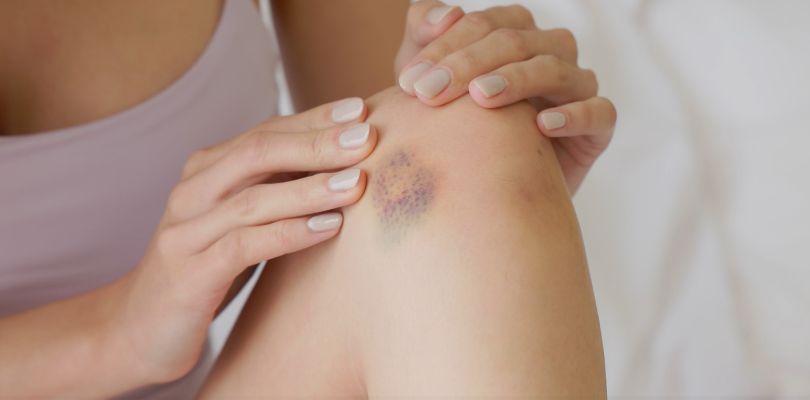Is It More Than a Bruise?
You can easily bruise or bleed when you don’t have enough platelets. ITP can happen to both children and adults, but it often affects people differently.
7 Signs of ITP
1. Easy Bruising
One of the first signs of ITP is easy bruising. Bruises might appear without any known cause, and they may show up in unusual places. The bruises may be larger and darker than normal. This happens because your blood isn’t clotting as it should, which allows blood to pool under the skin.
This article will explore the best inhalers for COPD, looking at the top options available. Read on to learn more.
2. Frequent Nosebleeds
People with ITP often experience nosebleeds. The bleeding can start suddenly and may be difficult to stop. Since platelets are important for blood clotting, the lack of platelets means even small injuries to the inside of your nose can result in significant bleeding.
3. Bleeding Gums
Another sign of ITP is bleeding from your gums, especially when brushing or flossing your teeth. If your gums bleed easily, it could be due to a low platelet count. Dental care might become more challenging because of the increased risk of bleeding.
4. Petechiae
Petechiae are small red or purple spots on your skin. These spots are tiny blood vessels that have burst under your skin because your blood can’t clot properly. Petechiae usually appear on the legs, but they can show up anywhere on your body.
5. Prolonged Bleeding from Cuts
If you have ITP, a small cut can take a long time to stop bleeding. This happens because your platelets are too low to help clot the blood. Even minor injuries can result in more blood loss than usual.
6. Heavy Menstrual Periods
Women with ITP may notice that their menstrual periods are heavier than normal. The lack of platelets makes it harder for the body to control bleeding, which can lead to more blood loss during menstruation.
7. Fatigue
Fatigue is a common symptom of ITP. Your body may become tired more easily because of the extra effort required to heal from frequent bruising and bleeding. The blood loss may also cause your body to work harder, which can leave you feeling exhausted.
Treatments for ITP
While there is no cure for ITP, treatments can help manage symptoms and raise platelet levels. The treatment plan depends on the severity of the condition and other individual factors. Here are some common treatments:
1. Corticosteroids
Corticosteroids, such as prednisone, are often the first line of treatment for ITP. These medications help reduce the immune system’s attack on platelets. By lowering inflammation, corticosteroids can increase your platelet count. However, long-term use of corticosteroids can lead to side effects like weight gain, high blood pressure and bone loss.
2. Intravenous Immunoglobulin (IVIG)
IVIG is another treatment option for people with ITP. It involves injecting a mixture of antibodies into your veins to temporarily increase your platelet count. This treatment is often used in emergency situations or before surgery to quickly raise platelet levels.
3. Platelet Transfusions
For people with very low platelet counts, platelet transfusions may be necessary. During this procedure, healthy platelets from a donor are transfused into your bloodstream. While this treatment can temporarily raise platelet levels, the effects usually don’t last long.
4. Splenectomy
In some cases, removing the spleen (splenectomy) may be recommended. The spleen is responsible for removing damaged or old blood cells, including platelets. By removing the spleen, fewer platelets are destroyed, which can improve platelet levels. However, this surgery is usually considered only when other treatments have failed.
5. New Medications
There are newer medications available that stimulate the production of platelets. These include drugs like eltrombopag (Promacta) and romiplostim (Nplate). These medications help your body produce more platelets, reducing the risk of bleeding and bruising.
Recognizing the Early Signs
ITP can be a challenging condition to manage, but recognizing the early signs can help you seek treatment quickly. If you notice easy bruising, frequent nosebleeds or prolonged bleeding, it’s important to talk to a healthcare professional. With proper treatment, people with ITP can live a normal, healthy life.







